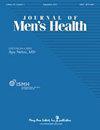男性足球运动员是否在不同的微循环结构中积累了足够的载荷?考察一支专业队伍的负荷、健康状况和训练/比赛比率
IF 0.6
4区 医学
Q4 Medicine
引用次数: 0
摘要
职业足球每周包括不同数量的训练和比赛,这可能会影响负荷分配。了解准确的分布可以为玩家提供适当的加载周期和计划。因此,本研究旨在(i)比较不同训练次数周之间的累积负荷和健康状况;(ii)比较不同训练次数周之间的内外负荷训练/匹配比(TMr)。10名每周比赛至少45分钟的球员在16周的时间里进行了分析。微周期结构包括每周3次(3dW)、4次(4dW)、5次(5dW)和6次(6dW)训练以及比赛日。采用以下测量方法进行分析:持续时间、疲劳程度、睡眠质量、肌肉酸痛、压力、情绪、感知消耗等级(RPE)、会话-RPE (s-RPE)、高速跑距离(HSR)、冲刺距离(SPD)、加速次数(ACC)和减速次数(DEC)。累积健康/负荷通过将所有训练和比赛次数相加来计算,而TMr通过将累积负荷除以比赛数据来计算。主要结果显示,除了5dW与6dW期间的情绪、持续时间、s-RPE、SPD以及3dW与4dW期间的s-RPE、HSR、SPD、ACC和DEC(均p >0.05)。此外,在持续时间方面,6dW显著高于4dW (p <0.05,中等效应量)、RPE、HSR和SPD(均p <0.05,效应量非常大),以及HSR和ACC的3dW (p <0.05,效应量非常大)。本研究表明5dW和6dW比3dW和4dW有更高的训练措施。此外,训练频率越高的微循环,健康状况越好。这些发现表明,身体负荷和健康状况并没有根据一个微周期内的训练次数进行调整。本文章由计算机程序翻译,如有差异,请以英文原文为准。
Are male soccer players accumulating sufficient load across varying microcycle structures? Examining the load, wellness and training/match ratios of a professional team
Professional soccer involves varying numbers of training sessions and matches each week, which can influence load distribution. Understanding the exact distribution may allow appropriate load periodisation and planning for players. Thus, this study aimed to (i) compare accumulated load and wellness between weeks with different numbers of training sessions and (ii) compare training/match ratio (TMr) of external and internal load between weeks with different numbers of training sessions. Ten players with a minimum of 45 minutes of weekly match-play were analysed over 16 weeks. The microcycle structures consisted of three (3dW), four (4dW), five (5dW) and six (6dW) training sessions plus match-day per week. The following measures were used for analysis: duration, fatigue, quality of sleep, muscle soreness, stress, mood, rating of perceived exertion (RPE), session-RPE (s-RPE), high-speed running distance (HSR), sprint distance (SPD), number of accelerations (ACC) and decelerations (DEC). Accumulated wellness/load were calculated by adding all training and match sessions, while TMr was calculated by dividing accumulated load by match data. The main results showed that accumulated wellness and load were significantly different, with moderate to very large effect sizes, except regarding mood, duration, s-RPE, SPD during 5dW vs. 6dW and s-RPE, HSR, SPD, ACC and DEC during 3dW vs. 4dW (all p > 0.05). Moreover, 6dW was significantly higher than 4dW regarding TMr of duration (p < 0.05, moderate effect size), RPE, HSR and SPD (all p < 0.05 with very large effect sizes) and for 3dW of HSR and ACC (p < 0.05 with very large effect sizes). This study showed that 5dW and 6dW had higher training measures than 3dW or 4dW. Additionally, higher wellness was presented in the microcycles with higher training frequencies. These findings suggest that physical load and wellness were not adjusted according to the number of training sessions within a microcycle.
求助全文
通过发布文献求助,成功后即可免费获取论文全文。
去求助
来源期刊

Journal of Men's Health
Medicine-Urology
CiteScore
0.70
自引率
28.60%
发文量
153
审稿时长
10 weeks
期刊介绍:
JOMH is an international, peer-reviewed, open access journal. JOMH publishes cutting-edge advances in a wide range of diseases and conditions, including diagnostic procedures, therapeutic management strategies, and innovative clinical research in gender-based biology. It also addresses sexual disparities in health, life expectancy, lifestyle and behaviors and so on. Scientists are encouraged to publish their experimental, theoretical, and descriptive studies and observations in as much detail as possible.
 求助内容:
求助内容: 应助结果提醒方式:
应助结果提醒方式:


